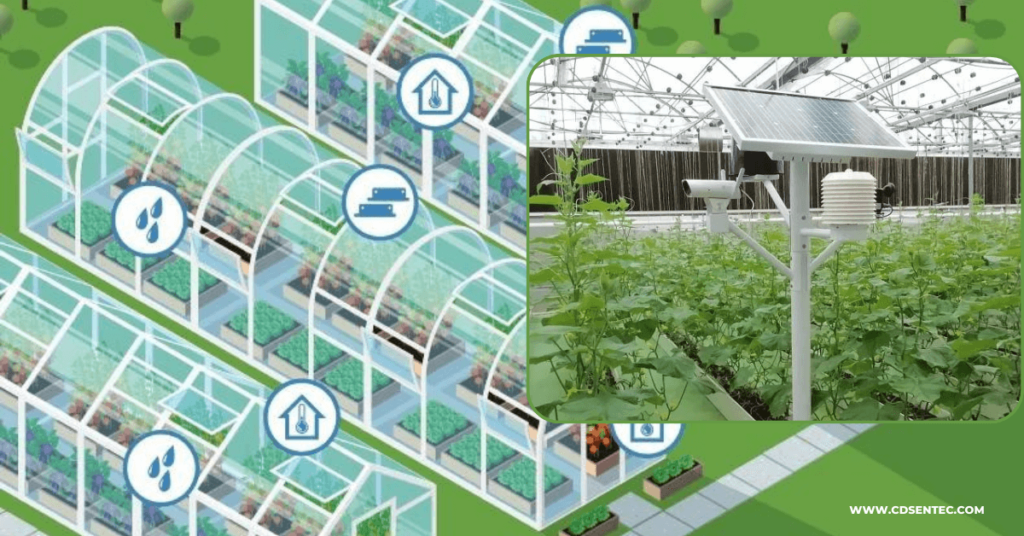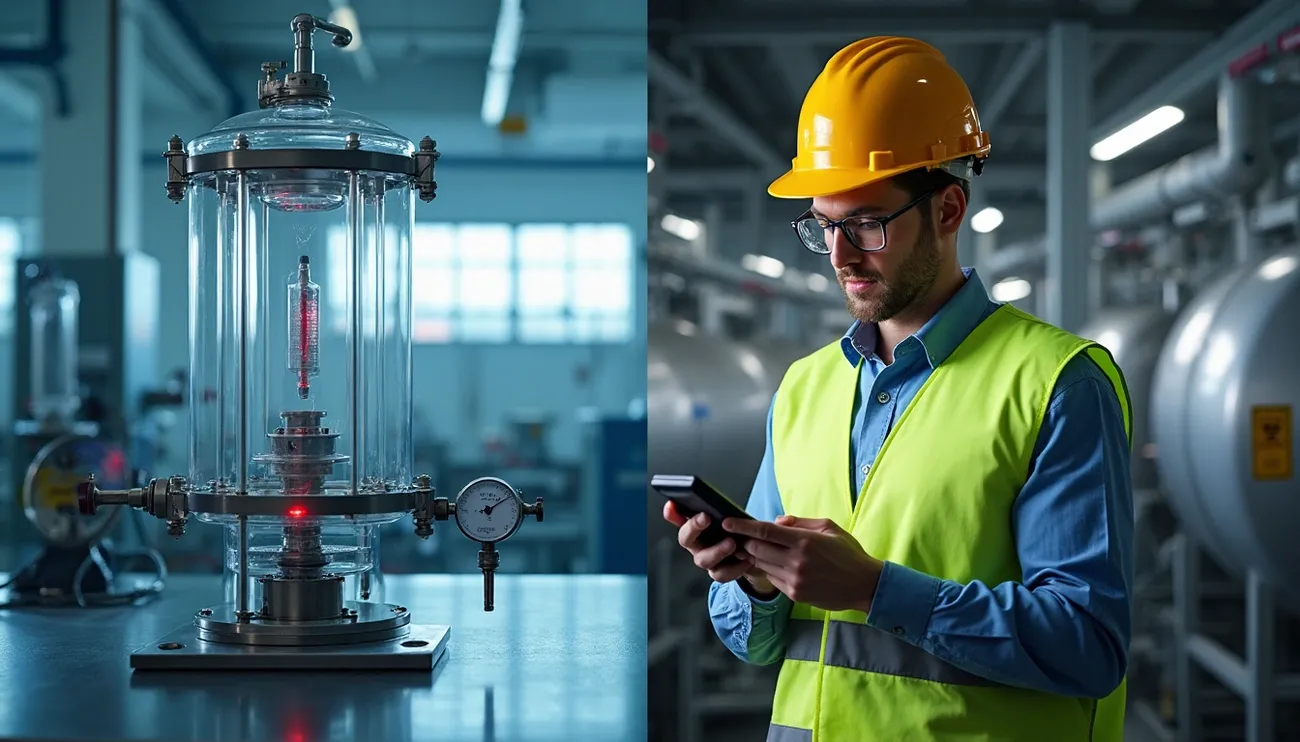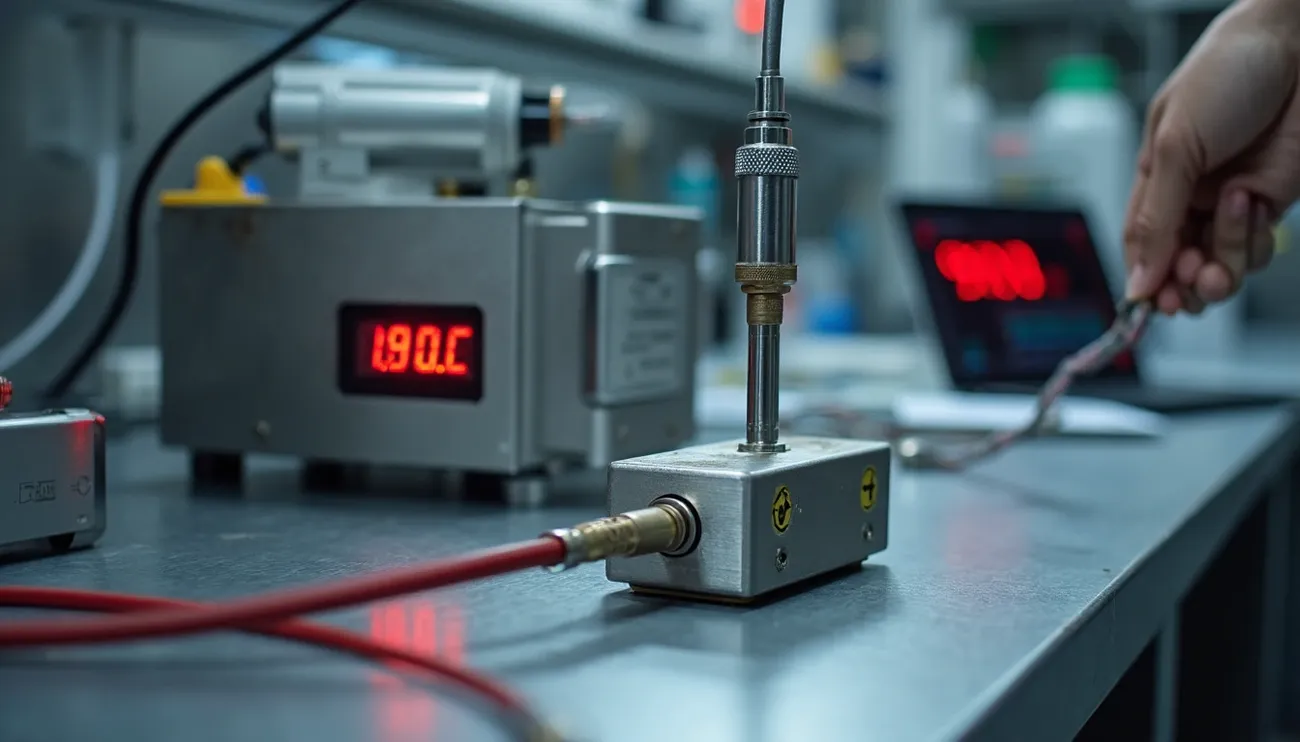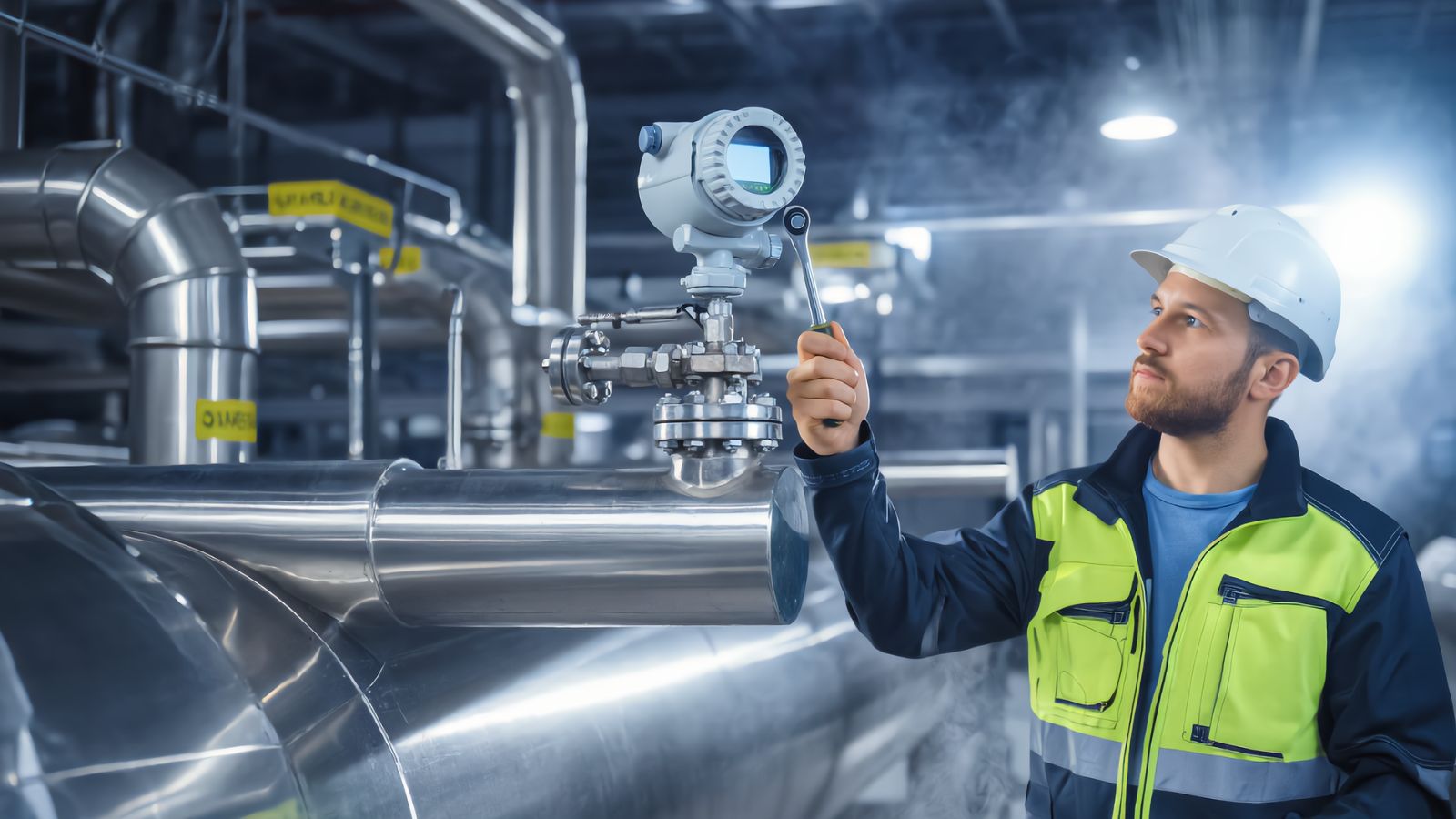Greenhouse sensors form an integral part of modern farming and horticulture. They are innovative tools that help monitor and control the environment inside a greenhouse. With the rise of technology, these tools are becoming increasingly advanced, offering precision and efficiency in ensuring optimal growth conditions for plants.
The use of greenhouse sensors has revolutionized the way farmers and horticulturists manage their greenhouses. These sensors provide data on various environmental factors including temperature, humidity, light intensity, and soil moisture, among others. Armed with this information, one can make informed decisions to improve plant health and yield.

The beauty of greenhouse sensors lies in their ability to provide real-time data. This allows for immediate action, thus preventing potential damage to the plants due to sudden changes in environmental conditions. The data collected by these sensors can also be stored and analyzed for future reference, providing valuable insights for better management of the greenhouse.
Understanding Greenhouse Automation
Greenhouse automation refers to the use of technology to control and manage the environment inside a greenhouse. This can be achieved through the use of various tools and equipment, including, but not limited to, greenhouse sensors. Automation is aimed at ensuring optimal conditions for the growth of plants, thereby increasing productivity and reducing labor costs.
The concept of greenhouse automation is rooted in precision agriculture, which involves the use of technology to optimize farming practices. By automating processes such as irrigation, ventilation, heating, and lighting, farmers can ensure that their plants receive exactly what they need, when they need it.
Greenhouse automation not only leads to increased productivity but also contributes to sustainable agriculture. By precisely controlling the use of water, energy, and other resources, farmers can reduce wastage, minimize their environmental footprint, and promote sustainable farming practices.
The Role of Greenhouse Sensors in Greenhouse Automation
In the context of greenhouse automation, greenhouse sensors play a critical role. They serve as the eyes and ears of the automated system, providing real-time data on various environmental parameters. This data is then used to control the functioning of various equipment, thereby maintaining optimal growth conditions in the greenhouse.
For instance, a greenhouse temperature sensor can monitor the temperature inside the greenhouse. If the temperature rises above a certain threshold, the sensor can trigger the ventilation system to reduce the temperature. Similarly, if the soil moisture level drops below a certain level, the sensor can activate the irrigation system to water the plants.
The use of greenhouse sensors in automation also enables remote monitoring and control. This means that farmers can keep an eye on their greenhouse from anywhere, at any time. They can also adjust the settings of the automated system remotely, giving them greater flexibility and control over their greenhouse.
What Sensors are Used in a Greenhouse?
There is a wide variety of sensors used in a greenhouse, each designed to monitor a specific environmental parameter. Some of the most common types of greenhouse sensors include temperature sensors, humidity sensors, light sensors, and soil moisture sensors.
Temperature sensors are used to monitor the temperature inside the greenhouse. They are essential for maintaining an optimal temperature for plant growth. Humidity sensors, on the other hand, measure the amount of moisture in the air. This is important for preventing diseases and promoting healthy growth.
Light sensors measure the intensity and quality of light inside the greenhouse. This information is crucial for ensuring that the plants receive adequate light for photosynthesis. Soil moisture sensors monitor the moisture content in the soil, helping to prevent overwatering or underwatering.
Besides these, there are also sensors for measuring CO2 levels, pH levels, nutrient levels, and more. The choice of sensors depends on the specific needs and objectives of the greenhouse.
How to Maximize Plant Growth with Greenhouse Sensors
Greenhouse sensors can be used to maximize plant growth in several ways. Firstly, they provide real-time data on environmental parameters, allowing for immediate action in case of any deviations from the optimal conditions. This can prevent potential damage to the plants, thereby ensuring healthy growth and high yields.
Secondly, greenhouse sensors enable precise control over the environment inside the greenhouse. By adjusting the functioning of various equipment based on the data provided by the sensors, farmers can ensure that their plants receive exactly what they need, when they need it. This can enhance the growth and productivity of the plants.
Finally, greenhouse sensors can provide valuable insights for future planning and decision-making. By analyzing the data collected by the sensors, farmers can identify patterns and trends, predict potential problems, and make informed decisions to improve their farming practices. This data-driven approach can lead to significant improvements in plant growth and yield.
Benefits of Using a Greenhouse Monitoring System
Greenhouse Monitoring System composition consists of various sensors (temperature and humidity sensor, soil temperature and humidity conductivity three-in-one sensor, light transmitter, oxygen and other gas transmitters), environmental monitoring host, environmental monitoring software cloud platform, which can control multiple Greenhouse.
The collected data is mainly composed of sensors, transmitters, environmental monitoring host, computer and its external equipment, and is the core part of the entire control and management system.
The detected physical quantity (air temperature and humidity in the greenhouse, light, soil moisture, oxygen, carbon dioxide gas concentration) is converted into a standard 485 signal by a sensor or transmitter, and then converted into a digital signal by the environmental monitoring host. GPRS/4G communication method inputs data into computer software. The software generates control decisions, issues control instructions, and controls the operation of the actuator based on the detection data and the predefined parameters and control algorithms given by the user.
A greenhouse monitoring system offers several benefits. Firstly, it provides real-time data on the environment inside the greenhouse, allowing for immediate action in case of any changes. This can prevent potential damage to the plants and ensure healthy growth.
Secondly, a greenhouse monitoring system enables remote monitoring and control. This means that farmers can keep an eye on their greenhouse and adjust its settings from anywhere, at any time. This can save time and effort, and provide greater flexibility and control.
Thirdly, a greenhouse monitoring system can lead to increased productivity and reduced costs. By automating processes and precisely controlling the use of resources, farmers can increase the yield and quality of their crops, while reducing labor and resource costs.
Key Features of an Automated Greenhouse Monitoring System
An automated greenhouse monitoring system comes with several key features. One of the most important features is the ability to monitor various environmental parameters in real-time. This includes temperature, humidity, light intensity, soil moisture, and more. The system provides instant alerts in case of any deviations from the preset values, allowing for immediate action.
Another key feature of an automated greenhouse monitoring system is remote control. This means that farmers can adjust the settings of the system from anywhere, at any time. This provides greater flexibility and control, and saves time and effort.
The system also comes with data storage and analysis capabilities. This means that all the data collected by the sensors can be stored and analyzed for future reference. By identifying patterns and trends in the data, farmers can make informed decisions to improve their farming practices.
Choosing the Right Greenhouse Temperature Sensor
Choosing the right greenhouse temperature sensor is crucial for the success of your greenhouse. The sensor should be accurate, reliable, and durable. It should be able to withstand the harsh conditions inside a greenhouse, including high temperatures, high humidity, and exposure to water and nutrients.
When choosing a greenhouse temperature sensor, consider its range, accuracy, and response time. The sensor should be able to measure a wide range of temperatures with high accuracy and provide quick responses. It should also be easy to install, use, and maintain.
Also, consider the compatibility of the sensor with your greenhouse monitoring system. The sensor should be able to communicate with the system effectively and provide real-time data on the temperature inside the greenhouse.
The Future: Smart Greenhouses and Greenhouse Systems
The future of greenhouse farming lies in smart greenhouses and greenhouse systems. These are greenhouses equipped with advanced technology, including greenhouse sensors, automated systems, and artificial intelligence, among others. They are designed to optimize the growth conditions inside the greenhouse, increase productivity, and reduce costs.
Smart greenhouses and greenhouse systems offer several advantages over traditional greenhouses. They provide real-time data on various environmental parameters, enable remote monitoring and control, and automate various processes such as irrigation, ventilation, heating, and lighting. They also come with data storage and analysis capabilities, providing valuable insights for future planning and decision-making.
The use of smart greenhouses and greenhouse systems is expected to increase in the future, driven by the growing demand for high-quality, locally-grown food, and the need for sustainable farming practices.
How to Implement Greenhouse Automation Systems
Implementing greenhouse automation systems can be a complex task, but with careful planning and execution, it can be done successfully. The first step is to identify your needs and objectives. What do you want to achieve with the automation system? What processes do you want to automate? What environmental parameters do you want to monitor?
Once you have a clear understanding of your needs and objectives, you can start designing your greenhouse automation system. This includes choosing the right greenhouse sensors, control devices, and software. You also need to consider the compatibility of the various components of the system.
After designing the system, the next step is to install it. This involves installing the sensors, control devices, and software, and connecting them to each other and to the internet. Once the system is installed, you need to test it to ensure that it is working correctly.
Finally, you need to monitor and maintain the system to ensure that it continues to function optimally. This involves regularly checking the sensors and control devices, updating the software, and analyzing the data provided by the system.
Best Practices for Using Automated Greenhouse Systems
Using automated greenhouse systems effectively requires a combination of technical knowledge and good farming practices. Here are some best practices to consider:
- Regularly check and maintain the sensors and control devices to ensure that they are functioning correctly.
- Update the software regularly to benefit from the latest features and improvements.
- Analyze the data provided by the system regularly to identify patterns and trends, predict potential problems, and make informed decisions.
- Use the remote control feature to monitor and adjust the settings of the system from anywhere, at any time.
- Consider the specific needs of your plants when setting the parameters for the system. Different plants have different needs when it comes to temperature, humidity, light intensity, and soil moisture, among others.
Conclusion: The Impact of Greenhouse Sensors on Maximizing Growth
Greenhouse sensors have a significant impact on maximizing growth in a greenhouse. They provide real-time data on various environmental parameters, allowing for immediate action in case of any changes. This can prevent potential damage to the plants and ensure healthy growth.
Furthermore, greenhouse sensors enable precise control over the environment inside the greenhouse. By adjusting the functioning of various equipment based on the data provided by the sensors, farmers can ensure that their plants receive exactly what they need, when they need it. This can enhance the growth and productivity of the plants.
Finally, greenhouse sensors provide valuable insights for future planning and decision-making. By analyzing the data collected by the sensors, farmers can identify patterns and trends, predict potential problems, and make informed decisions to improve their farming practices. This data-driven approach can lead to significant improvements in plant growth and yield.
In conclusion, greenhouse sensors are a powerful tool for maximizing growth in a greenhouse. They are an integral part of greenhouse automation, and their use is expected to increase in the future, driven by the growing demand for high-quality, locally-grown food, and the need for sustainable farming practices.




